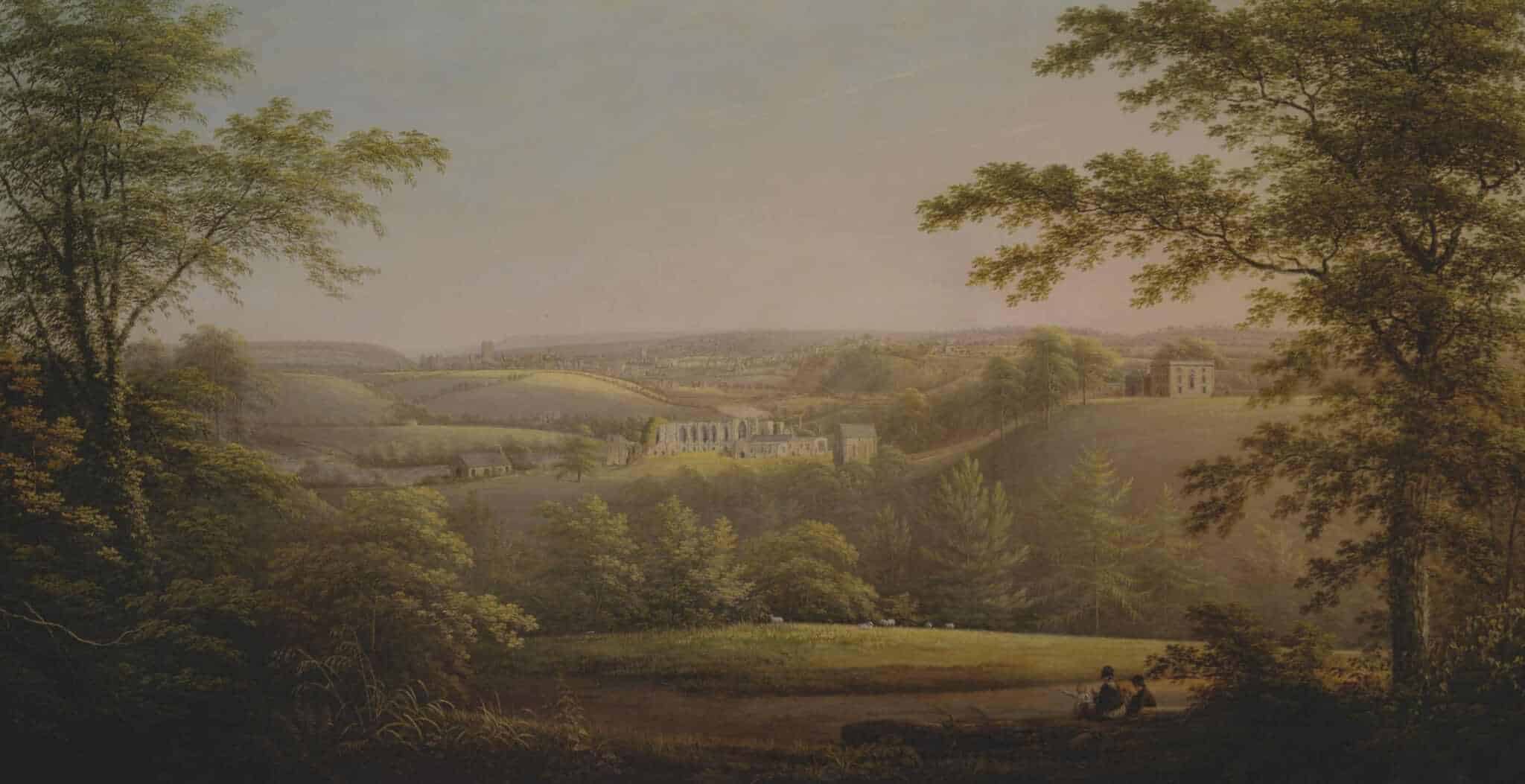The ancient seaport of Whitby, Yorkshire is a beautiful and picturesque natural harbour situated on England’s North East Coast.
It is essentially a town of two parts divided by the River Esk, and Whitby’s natural geographic situation has shaped both its historical and commercial past and continues to influence its culture to the present day.
Whitby is steeped in history. The East Side of Whitby is the older of the two sections and the location for the Abbey, the founding point for the town, which dates back to 656 AD. On the headland near the Abbey there are indications of an earlier Roman lighthouse and small settlement, indeed the early Saxon name for Whitby was Streonshal meaning Lighthouse Bay, which leads onto Yorkshire’s famous Cleveland National Trail.
 At the bottom of the 199 steps that lead to the Abbey is Church Street (formerly known as Kirkgate), whose cobbled streets and many cottages and houses date from the 15th century, when the numerous narrow alleyways and yards provided escape routes for smugglers and gangs of youths from the customs men and press gangs who were hot on their heels. Church Streets origins can be traced back even further however, with dwellings having been documented at the foot of the Abbey steps as early as 1370.
At the bottom of the 199 steps that lead to the Abbey is Church Street (formerly known as Kirkgate), whose cobbled streets and many cottages and houses date from the 15th century, when the numerous narrow alleyways and yards provided escape routes for smugglers and gangs of youths from the customs men and press gangs who were hot on their heels. Church Streets origins can be traced back even further however, with dwellings having been documented at the foot of the Abbey steps as early as 1370.
The lively Market Place, which still attracts stallholders and visitors alike, dates back to 1640. Just off the Market Place is Sandgate (so called because it leads to and borders the east sands), a bustling high street where Whitby jet can still be purchased. Having been carved since the Bronze Age, the jewellery made from fossilized monkey puzzle trees was made fashionable by Queen Victoria, who wore it in mourning of her beloved Prince Albert following his death from supposed typhoid fever in 1861. Following the discovery of a Victorian jet workshop, completely sealed up in the attic of a derelict property in central Whitby, the Whitby Jet Heritage Centre removed and rehoused the workshop to allow visitors the chance to experience a unique piece of Whitby’s heritage.

Whitby West Cliff top, which is today dominated by hotels, guest houses, holiday accommodation and tourist attractions once played host to a very famous visitor. Bram Stoker stayed at a guest house in Royal Crescent in the late 19h century, and drew inspiration for his famous novel ‘Dracula’ from Whitby Abbey and the surrounding area. Indeed, the novel depicts Dracula coming ashore in the form of a black dog shipwrecked off the coast of Whitby. The Dracula Society and a number of fans of the novel still travel to Whitby to commemorate the character for a few days every year in April and November. They dress in period costume as they wander the town and it seems almost as though Whitby has stepped back in time for these few days every year.
Whitby’s famous son
At the top of Khyber Pass with its panoramic views over the North Sea, is the famous Whale Bone Arch, which was originally erected in 1853 in homage to Whitby’s thriving whaling trade. The bones which currently form the arch are a lot more recent however, having been brought over from Alaska in 2003.

To the left of the Whale Bone Arch stands the bronze statue of Captain James Cook, the Yorkshireman famous for his exploration and cartography of Newfoundland, Australia, New Zealand and Hawaii. Whilst he would rise to the prestigious position of Captain in the Royal Navy, it was in Whitby that the eighteen year old Cook was first taken on as a merchant navy apprentice for the small fleet of vessels run by local ship-owners John and Henry Walker. It is fitting then perhaps that their old house on Grape Lane now houses the Captain Cook Memorial Museum. Visitors to the town can also get a feel for Cook’s Whitby as a replica of his famous ship The Endeavour makes regular sea voyages from Whitby Harbour.
Further information on Whitby and surrounding areas can be found at https://www.wonderfulwhitby.co.uk
All photographs courtesy of Wonderful Whitby.
© Suzanne Kirkhope, Wonderful Whitby
Tours of Historic Whitby
For more information concerning tours of historic Whitby, please follow this link.
Getting here
Whitby is easily accessible by both road and rail, please try our UK Travel Guide for further information.
Roman Sites
Try our interactive map of Roman Sites in Britain to browse our database of visible Roman remains.
Anglo-Saxon Sites in Britain
Explore our interactive map of Anglo-Saxon Sites in Britain for nearby sites.
Cathedrals in Britain
Browse our interactive map showing the Christian Cathedrals of Britain.
Museums
View our interactive map of Museums in Britain for details of local galleries and museums.







